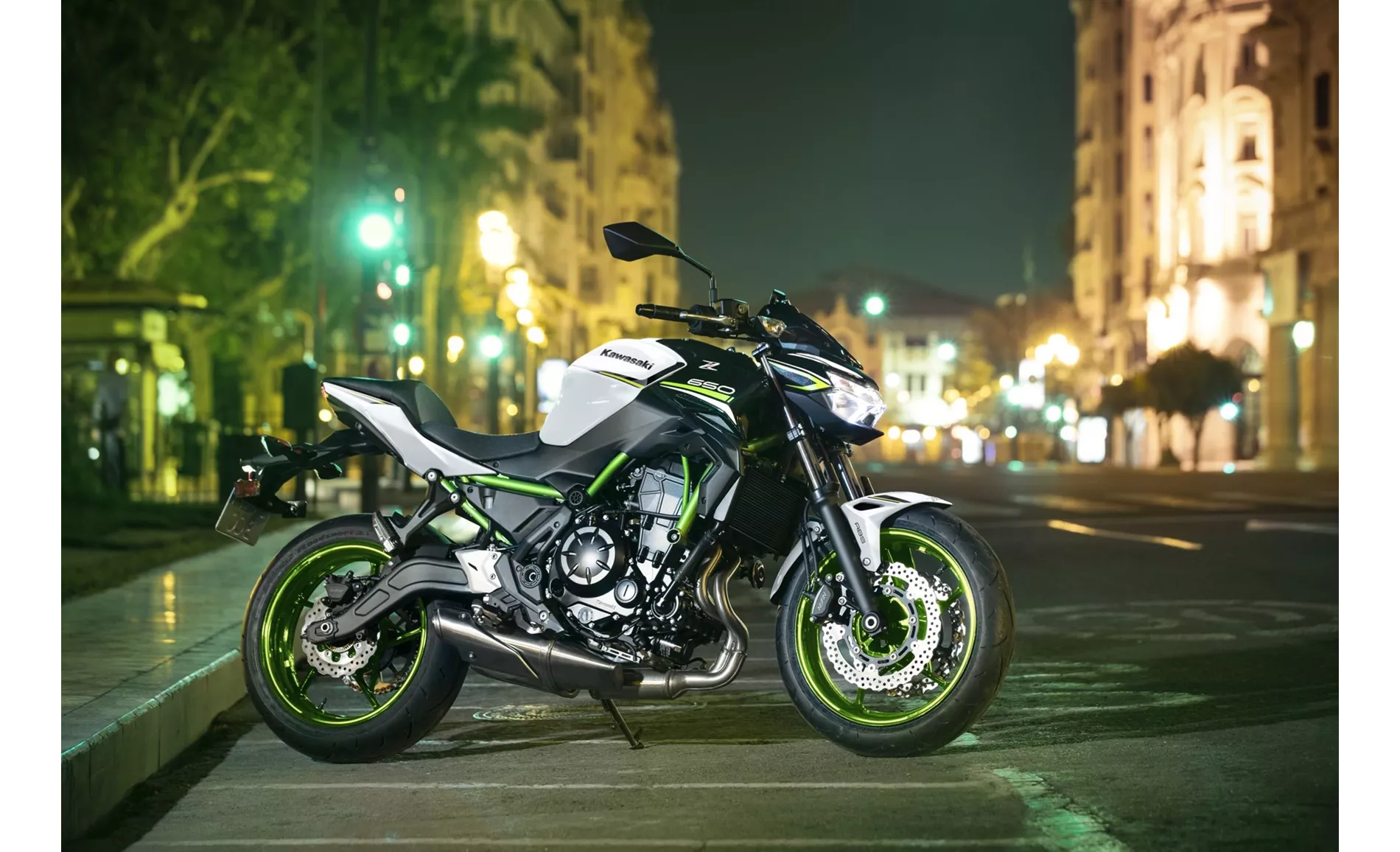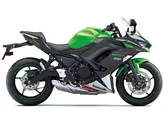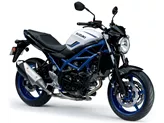Kawasaki Z650 2021 vs. Kawasaki Ninja 400 2023

Kawasaki Z650 2021

Kawasaki Ninja 400 2023
Overview - Kawasaki Z650 2021 vs Kawasaki Ninja 400 2023
When comparing the Kawasaki Z650 2021 and the Kawasaki Ninja 400 2023, there are several key differences to consider.
In terms of engine specifications, the Z650 has a larger displacement of 649cc compared to the Ninja 400's 399cc. This results in the Z650 producing more power with 68.2 HP compared to the Ninja 400's 45 HP. The Z650 also has a higher torque output of 65.7 Nm compared to the Ninja 400's 37 Nm. Additionally, the Z650 has a slightly higher compression ratio of 10.8 compared to the Ninja 400's 11.5.
Both bikes feature a liquid-cooled, inline engine configuration with two cylinders and four valves per cylinder. They also both have fuel injection systems and use a monoshock suspension setup at the rear. The Z650 has a telescopic fork front suspension with a diameter of 41 mm, while the Ninja 400 shares the same front suspension setup.

Kawasaki Z650 2021
In terms of braking, the Z650 features double disc brakes with a diameter of 300 mm and double piston calipers at the front, while the Ninja 400 has a single disc brake with a larger diameter of 310 mm and double piston calipers. Both bikes utilize petal technology for their brakes.
In terms of dimensions and weights, the Z650 has a slightly wider front tire width of 120 mm compared to the Ninja 400's 110 mm. The Z650 also has a larger fuel tank capacity of 15 liters compared to the Ninja 400's 14 liters. The Z650 has a wheelbase of 1410 mm, while the Ninja 400 has a slightly shorter wheelbase of 1370 mm. The Z650 also has a higher seat height of 790 mm compared to the Ninja 400's 785 mm. The Z650 is also heavier, with a kerb weight of 187.1 kg compared to the Ninja 400's 168 kg.

Kawasaki Ninja 400 2023
In terms of strengths, the Z650 offers an accessible two-cylinder engine, compact dimensions, a low seat height, a stable chassis, and a TFT display with connectivity. It also has a grown-up look. On the other hand, the Ninja 400 offers a good combination of stability and playful handling, a robust and reliable appearance, a well-controllable engine, a wide usable rev range, and a pleasant seating position.
In terms of weaknesses, the Z650 may be uncomfortable for tall riders and may have a lower adrenaline level in the saddle compared to its competition. The Ninja 400 has limited space for larger pilots.
Overall, the Z650 and Ninja 400 cater to different riding preferences. The Z650 offers more power and a larger displacement, making it suitable for riders who prioritize performance. The Ninja 400, on the other hand, offers a more nimble and playful handling experience, making it suitable for riders who prioritize agility and maneuverability.
Technical Specifications Kawasaki Z650 2021 compared to Kawasaki Ninja 400 2023
Pros and Cons in comparison
Pros and Cons in comparison
Kawasaki Z650 2021

Even in 2021, the Kawasaki Z 650 stands for easy riding with great looks and good equipment. Both seat height and engine are very accessible and will give both experienced riders and newcomers a lot of pleasure. If you are looking for an honest naked bike without any big surprises, this is the bike for you. Due to its compact dimensions, however, you should try it out before buying and perhaps go for the raised seat.
Kawasaki Ninja 400 2023

The Ninja 400 offers a lot of riding fun at a manageable price. It offers playful handling without being nervous. The name "Ninja" is a bit of a mouthful, but the range of use is wider than you might think. It rides sportily, but also offers a good riding position for everyday use and touring.
Price Comparison Avarage Market Price Kawasaki Z650 vs Kawasaki Ninja 400
There are a few key differences between a Kawasaki Z650 2021 and a Kawasaki Ninja 400 2023. In terms of price, the actual average price of a Kawasaki Z650 2021 is about 5% higher. Compared to Kawasaki Ninja 400 2023 there are less Kawasaki Z650 2021 bikes available on the 1000PS.de Marketplace, specifically 25 compared to 73. It takes less time to sell a Kawasaki Z650 with 106 days compared to 165 days for a Kawasaki Ninja 400. Since model year 2017 1000PS.de editors have written 31 reviews for the Kawasaki Z650 and 9 reviews for the Kawasaki Ninja 400 since model year 2018. The first review for the Kawasaki Z650 was published on 08/11/2016 and now has more than 25,000 views. This compares to more than 44,300 views for the first review on Kawasaki Ninja 400 published on 22/11/2017.






















